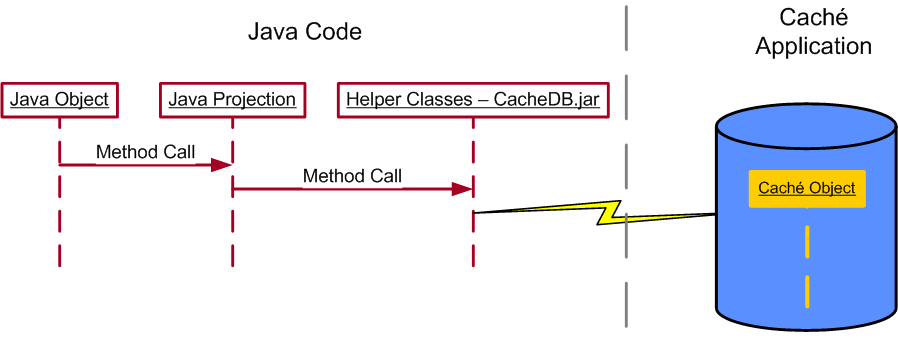Java Projections
A Java projection for a Caché class is a pure Java class. Within Java code, the projection serves as a proxy for its corresponding Caché class. The Caché class itself remains in the Caché server. Java code uses Java projections together with some helper classes to communicate with Caché classes and objects on the Caché server. The helper classes are in cache.jar, which is included in a standard Caché installation.
Using Java projections for Caché classes, Java code can do all of the following:
-
Open Caché objects.
-
Update Caché objects.
-
Delete Caché objects.
-
Create new Caché objects.
-
Execute Caché methods.
-
Execute Caché queries.
-
Execute basic routines.
Here is the sequence of events at runtime when Java code uses a proxy object to execute a Caché method:

There are actually two different versions of the Caché Java Binding: The Full Binding and the Light Binding. The above list describes the capabilities of the projections in the context of the Full Binding. The Light Binding offers higher performance, but a more limited set of capabilities. For more information, read the discussion of Full and Light connections in Connecting to Caché in the Caché Java Binding and JDBC QuickStart Tutorial.
The Caché classes represented by the Java projections can be either persistent classes that represent Caché data or transient classes that provide services, but store no data.